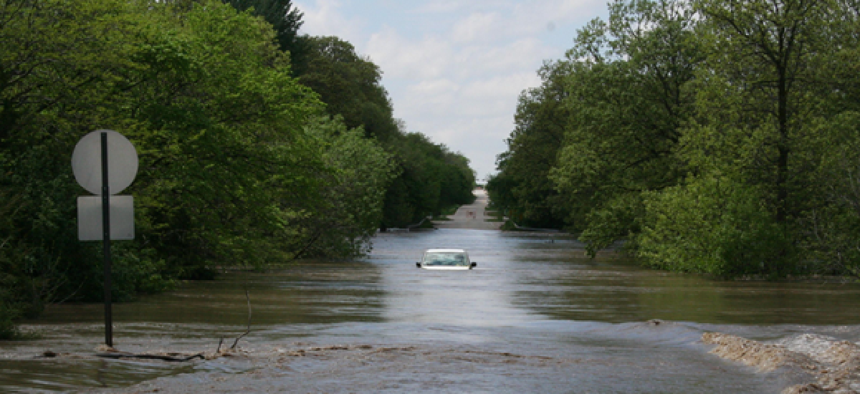DIY guide to installing low-cost flood sensors


Connecting state and local government leaders
After sensors placed in flood-prone areas began collecting data accurate enough reduce flood risks, officials realized the setup could be adapted to any setting.
After low-cost sensors placed in flood-prone areas throughout around Charlotte and Mecklenburg, N.C., began collecting data accurate enough to reduce flood risks, officials realized the setup could be adapted to any setting.
One of the fastest growing metropolitan areas in the country, Mecklenburg County sits in a web of over 370 miles of streams, with an estimated 2,800 houses and buildings situated in mapped floodplain areas.
Charlotte-Mecklenburg Storm Water Services, a joint municipal/county storm water utility, manages the runoff from rainfall and aims to reduce flooding, restore floodplains and protect the quality of local surface waters. In partnership with the Department of Homeland Security’s Science and Technology Directorate’s Flood Apex Program, SWS deployed a network of low-cost flood sensors to boost real-time data connectivity to improve flood management.
Starting in 2018 and through February 2020, SWS integrated 118 low-cost sensors into its Flood Information and Notification System, giving officials the ability to monitor 96% of the county’s flood risk.
So that other localities could take advantage of lessons learned, SWS and DHS S&T published the Low Cost Flood Sensors: Urban Installation Guidebook based on information collected from 18 months of operating low-cost sensors in an urban setting.
The guide provides insights on selecting sensor locations and installation as well as operation and maintenance.
To support communication requirements for different sensor locations, localities may need to select vendors that can provide radio, cellular or satellite communication capabilities, the guidebook says. Additionally, some communities may have existing flood management software that easily integrates data from the sensors, while others may need to consider new applications. Users should also consider a vendor’s ability to provide data hosting, visualization and notification services along with system redundancy, security and an affordable price tag.
The appendix provides forms and checklists that serve as templates for other communities.
The sensors installed by SWS are not as accurate as the scientific-grade stream and rain gauges deployed by the U.S. Geologic Survey, but they “offer a significant cost savings and can be quickly deployed almost anywhere a community needs reasonably accurate (0.10 feet), real-time flood data to warn citizens and first responders, and to support decision-making,” the guidebook says.
The guidebook makes some suggestions for improvements, though. The cameras were unable to meet the needs of several of the use cases, with high-resolution images requiring significantly more power and time to transmit. The in-stream units were susceptible to damage, and others that were not fully enclosed suffered damage from insects.
Nevertheless, SWS concluded that the sensors were easy to install in every setting. Devices could be set up by a single technicians and they “met or exceeded the accuracy requirements” for each use case.
“Our collaboration with Charlotte-Mecklenburg allowed us to modify the sensors and provide additional functionality specifically needed by local communities,” said Jeff Booth, director of S&T’s Sensors and Platforms Technology Center. “Their knowledge, experience and recommendations on installation, monitoring, operations and maintenance will help other communities with their investments of a low-cost sensor network for flood hazard mitigation.”




